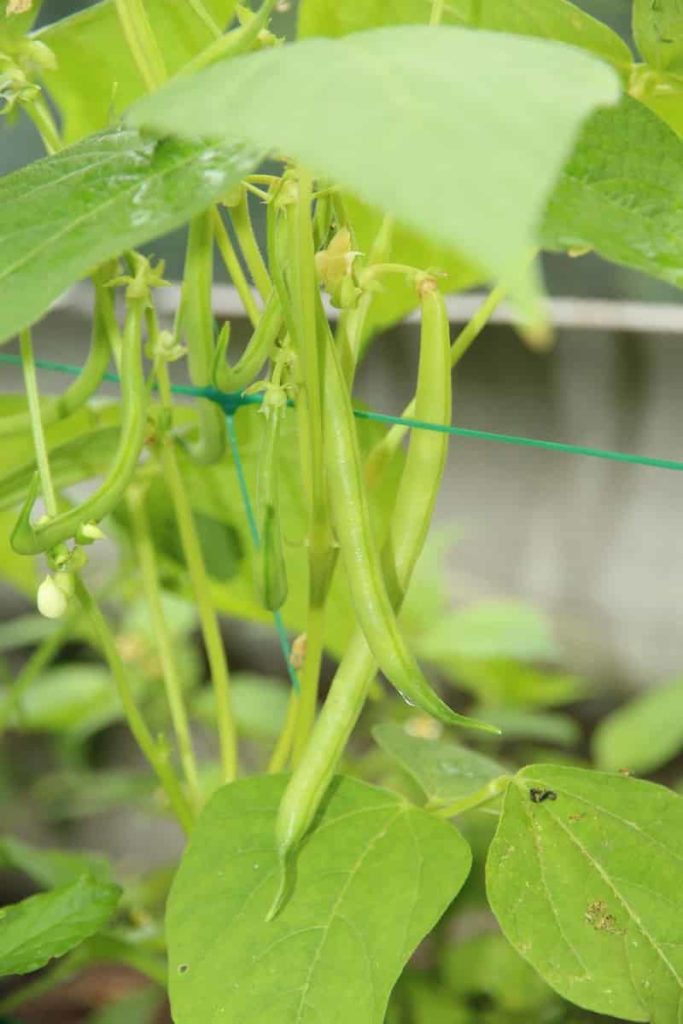Most Beans will give you a good crop in the loamy, sandy, rocky, rich or poor, and even clay soil. But avoid planting Beans in shade or soil that remains wet and do not drain well. Bean diseases thrive in wet conditions, and roots may not get enough oxygen with water and mud that shuts down their air channels. Let’s check out more information about soil preparation for Green Bean plants.
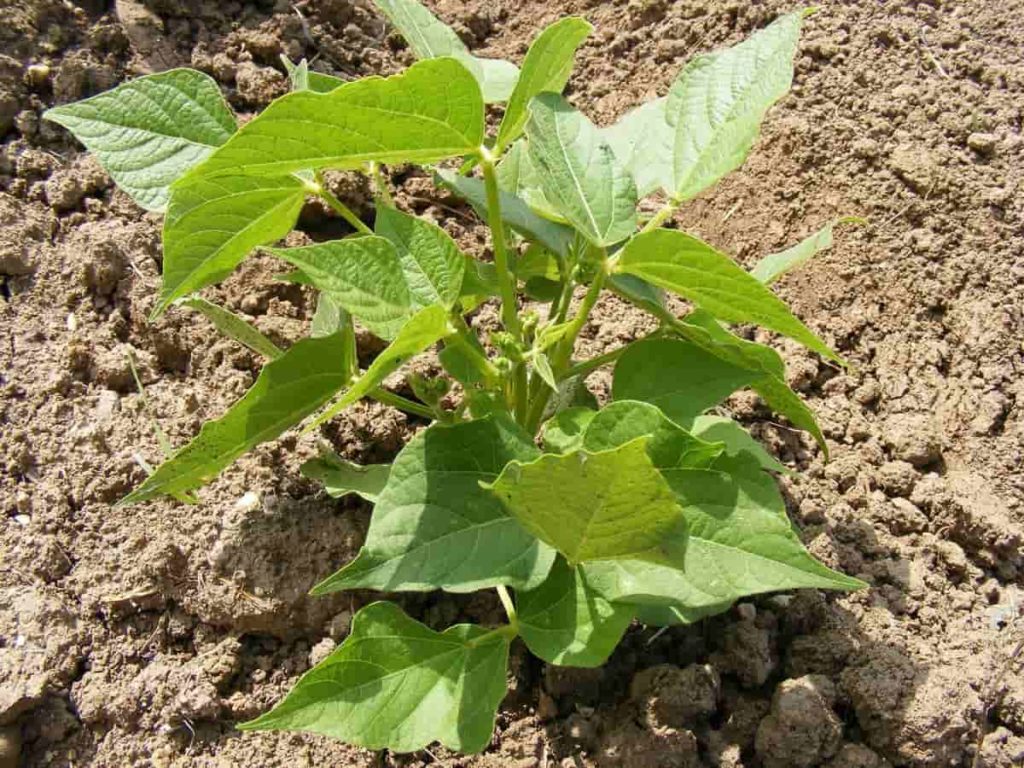
Sandy and silty loamy soils are best for Green Beans, although they can grow in almost any soil variety other than heavy soil. A lot of clay tends to be poorly drained, which can cause root rot and blossom drop. However, you can improve its structure by cultivating it well and adding amendments like sand and peat moss if you have clay soil. Soil should ideally be kept moist, but avoid wet, water-filled areas.
The main reason Beans don’t need many nutrients is because they can produce nitrogen. Like all Beans, Beans have a relationship with nitrogen-fixing bacteria. These bacteria nodules on the roots of bean plants. Nodules convert nitrogen from the air into nitrogen compounds in the soil, making it accessible for Beans and other nearby plants. This process takes some time, mainly if you have never grown Beans.
Your soil probably contains adequate nutrients, especially if you modify it annually with compost or manure. However, beans also require warm soil, permanent moisture, and at least six to eight hours of sunlight to thrive. Bean seeds do not grow well in cold, wet soil, so wait for them to be planted until after the last expected frost. Pole Beans and Bush Beans will mature quickly; most Dry Beans, like kidney and navy Beans, need a long growing season.
In case you missed it: Best Fertilizer for Green Beans: Homemade, Natural, Organic, NPK, Compost Manure, and Schedule
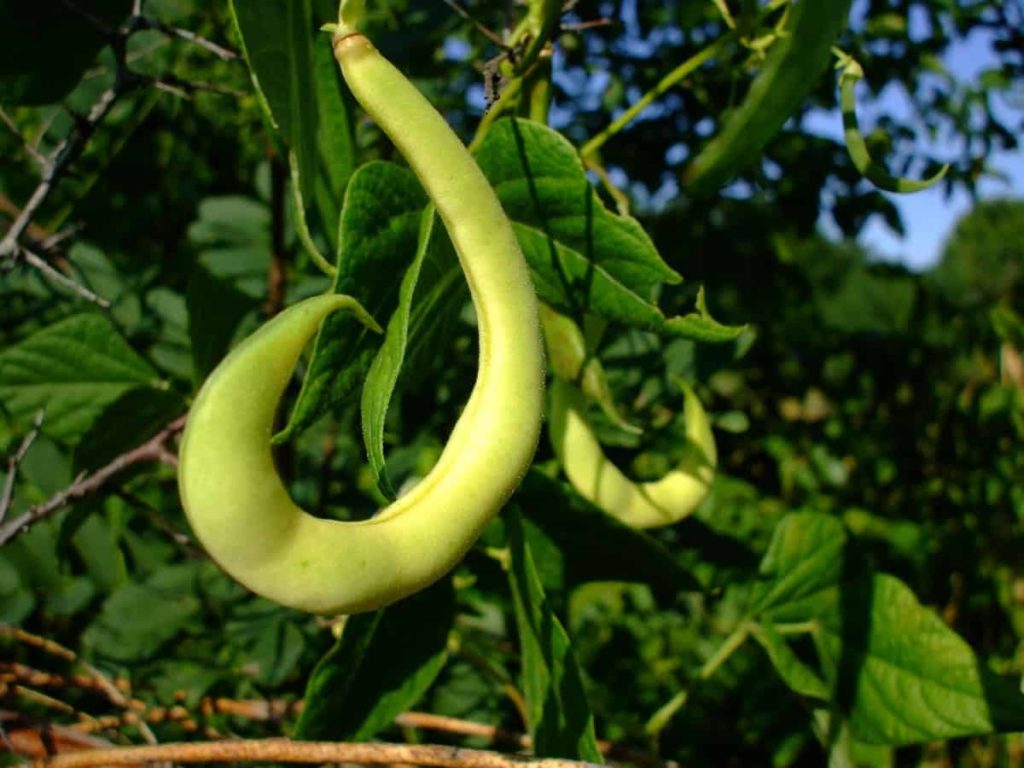
Soil preparation for Green Bean plants
Soil pH for Green Beans
Before you plant Green Beans, it’s good to check your soil. Soil test results will reveal your soil pH and nutrients, making it easier to decide whether soil modification is necessary and in what quantity. Beans like soil that’s a little acid, with the best pH range from about 6.0 to 6.5. They will grow beyond this limit, but when the pH is a little acid, they make the best use of nutrients and fertilizers in the soil. In addition, the soil test will tell you how much lime (to neutralize acid soil) or add sulfur (to correct alkaline soil).
If you add lime or sulfur, mix it in the top six to eight inches of soil. While you can add it, the decline is excellent as lime or sulfur takes time to work. If you have less annual rainfall, your soil is likely alkaline. To bring it to the preferred slightly acidic limit of the Bean, add an iron sulfate. This agent reduces pH in 3 to 4 weeks. Adding 362 grams to 100 square feet of sandy or sandy loam soil reduces soil pH from one unit.
If you have silty loam or loam soil, increase this amount to 1 kg per 100 square feet. Regularly, heavy rain catches minerals from your soil, leaving it more acidic. While Beans prefer slightly acidic soil, a pH reading below six prevents growth. The most common way to increase pH is to add a pulverized dolomitic limestone.
To increase sandy soil from 5.5 to 6.5, work 2 kg of lime in the top 6 inches of 100 square feet of soil. In the loam soil, increase this amount to 3.4 kg for the same results. Clay soil needs to be 4.5 kg for the same results. pH can take up to a year to go up and do it before you plant it.
Preparation of soil for growing Green Beans in pots
Green Beans can be beautiful plants for pots. Their beautiful flowers and attractive leaves can be a real asset in a private yard, balcony, or courtyard setting. But, unfortunately, they fix their nitrogen and can grow in a less healthy state than other plants. Still, to maximize your crop and facilitate your plant care, it’s good to start the season with quality, fresh potting soil. Potting soil contains vermiculite or perlite. Both substances are great for maintaining moisture and controlling the release of nutrients.
In case you missed it: Green Beans Backyard Gardening Techniques
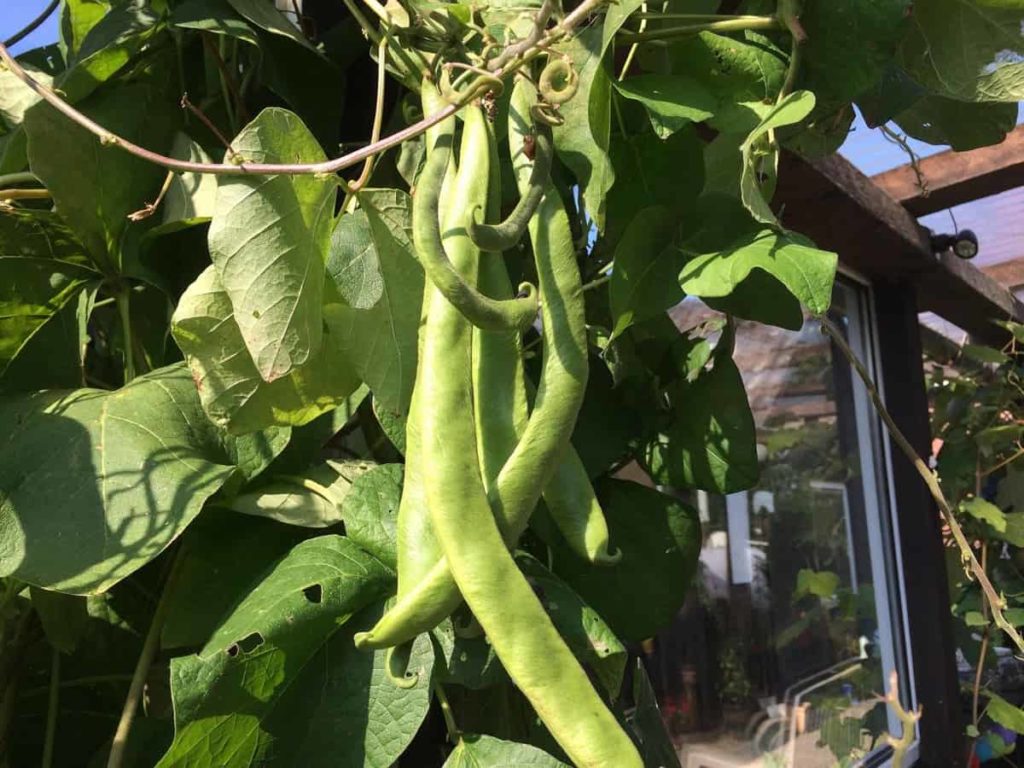
These properties are essential in pots as a low soil volume risk drying up and washing nutrients. Fill your pot with standard, organic potting soil at the beginning of the season. Then, once your Beans have died for years, you can repurpose the soil in your garden bed that puts all the Beans fixed nitrogen to use.
You can buy vegetable start mix or make your own. Use equal portions of sphagnum moss or compost with pasteurized soil and vermiculite or perlite. Add vegetable fertilizer or manure before planting. You can also use a soilless medium for Beans as a potting mix.
Preparation of soil for growing Green Beans on the grounds
Like all vegetables, Beans also need nutritious soil. Therefore, it is essential to continuously modify the soil and fill its nutrients when starting a vegetable garden. Planting Bean seeds in the good soil of a modified garden with manure helps the roots find the nutrients available immediately. As soon as the roots descend, they draw water and nutrients from the soil into the seed itself.
Remove all weeds and garbage from the planting area before planting Green Beans. Then 8 to 10 inches deep into the soil and rake it several times to break the large clods. It is better to make the garden soil work only when it is so dry that it does not stick to the garden’s tools. Use well-rotted manure or compost in planting to enhance organic soil matter.
Land preparation for Green Beans
Choose a place that gets full sun in spring and summer, is beyond the reach of constant breeze, and drains well. Of course, it is better not to grow Beans in the same land within 2 or 3 years as diseases are possible. But if you have some alternative growing spots and there was no disease at this place this past season, you can plant in the same place again after enriching the soil. To start the Beans well, your garden to a depth of six to eight inches, and make sure the soil is as accessible as possible from the ground or clumps of sod.
Deep, loose soil seed allows the roots of the Bean to spread rapidly and take water, food, and oxygen easily. For the best germination, wait until the soil temperature is at least 16°C for planting. To jump on weeds, work twice or three times on the soil several days before planting. Every time you do that, you’ll kill many weeds that have just started to grow. Until the last time before planting.
In case you missed it: Top 30 Vegetables To Grow In A Greenhouse
Loosen the soil with a garden fork, and dig a trench 18 inches wide and 12 inches deep. Then add compost or aged manure to the soil. You can also include a bone meal or horn fertilizer (which improves root growth and soil structure) or a blood meal. Then fill the trench with the soil, another layer of manure, and the rest of the soil. You will have a planting bed or row raised slightly above the surrounding garden ground; it will be the quick drain (like well-drained soil) and early spring heating (ensuring fast seed germination).
How to Grow Green Beans in poor soil
Beans can grow in almost any kind of soil. You can convert any soil into airy soil with the right mixture of fertilizer and mulch, placed inside and above the soil. Gardeners who have small gardens want to use potting soil. Potting designed for vegetables is some of the best nutritional quality for growing any Bean in the soil. The Beans will grow quite well in clay soil. However, since clay soil is dense, the ground can harden underneath and become a light soil crust on top.
Gardeners working with Clay soil should ensure that the Beans are deep enough to prevent them from connecting to the upper soil. For best results, mix 2 to 3 inches of organic material such as fertilizer with 453 grams of manure for every 100 feet of soil.
Best soil mix for Green Beans
Potting soil will do a great job growing Beans, but you should purchase the correct soil type. Beans grow well in nutritious soil with good drainage. Mix the garden manure with potting soil to prepare your soil for the Beans. Properly break any soil-like structure up to the soil. Beans are nitrogen-fixing plants; they can draw nitrogen from the air and make the soil more fertile. Just add compost to your soil, and you are good to move to the next planting stage.
In case you missed it: Microgreens Gardening For Beginners, How To Start
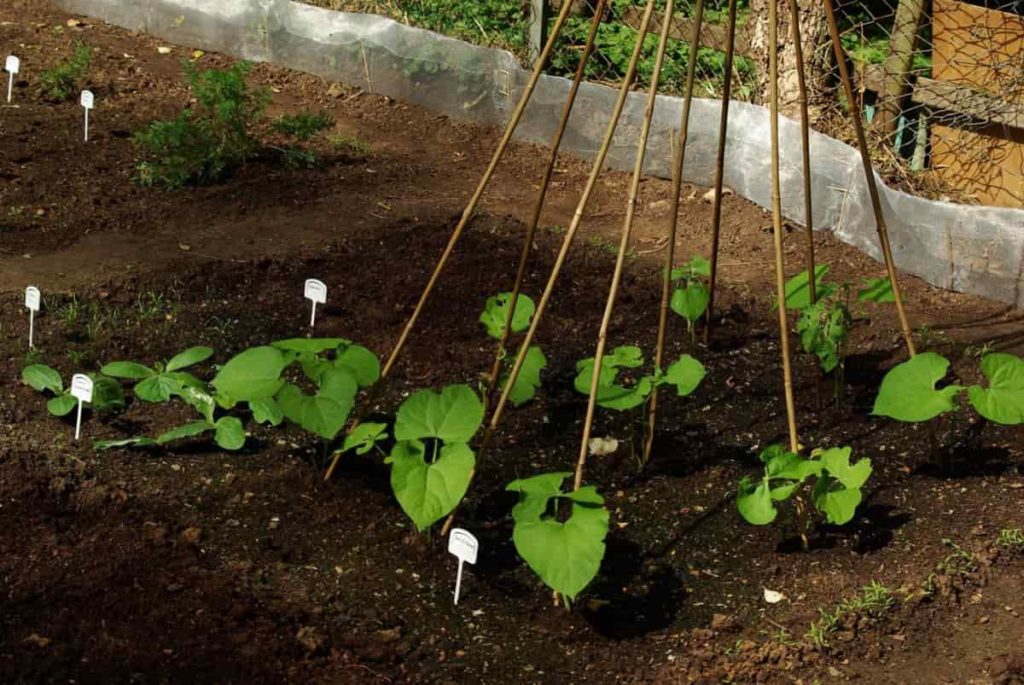
Soil recipe for Green Beans
Buy a standard potting mix or make equal parts your own with coconut coir or compost and clean (disease-free) garden soil. Adding vermiculite or perlite will help maintain moisture, which is necessary for these thirsty plants. Mix in some well rotten organic manure or organic vegetable manure for best results before planting. Low nitrogen fertilizer will encourage the growth of Beans instead of excessive leaves.
Soil composting for Green Beans
Select a well-drained site and receive sunlight for at least 6 hours per day. Spread a level of well-decomposed manure to a depth of 3 inches throughout the bed, creating a ratio of about half the manure to half the soil, and this work is done in the soil. Before growing Beans, allow manure to age for several months, as fresh manure can burn soft new seedlings. Next, plant the Beans according to the direction of the packet, or about 1 inch deep in the soil and about 3 inches in line or at the base of the Pole Bean support structure.
Rows of space Bush Beans are at least 1 foot apart to facilitate access to groups of Pole Bean seeds about 3 feet away to allow for support structures. Side dress the Bean plants with manure when they are about 4 inches long if you have grown Beans first at this place and are concerned about the lack of potassium and phosphorus in the soil due to previous plantations.
Gently work the manure with rows of bush Beans or in the upper inch or more of the soil based on the Pole Bean plants, ensuring that it is kept about 4 inches away from the plant. Make a 2-inch bed compost to continue enriching the soil during the inactive months. After harvesting, you can use fresh manure on top of your bean patch, as it will have plenty of time to mature in the winter months.
Natural soil amendments for Green Beans
Nitrogen-rich fertilizers such as manure are the first food for planting. The exception to this is when growing Beans and other legumes. Beans are nitrogen fixers, as they take nitrogen from the air and leave it in the soil, which meets their nitrogen needs. However, fertilizing your soil with too much nitrogen, combined with nitrogen determined by Beans, can lead to the growth of too many stems and leaves and very few or tiny Beans.
Over-sharper stem and leaf growth additionally put plants at risk for less excitement and greater sensitivity to pests and diseases. If your soil is clay, you need to add amendments to make your green Beans happy. You can add manure, mulch, and sand to change the consistency of the soil. If you don’t have any compost, you can mix chicken or cow manure in the soil. Spread the manure thickly on about 3 inches of soil and then work in the soil with the tiller.
What to do with soil after growing Green Beans
Eggplant and Radish all grow well with Green Beans. Each of these plants encourages vigorous growth. Marigold saplings are a great companion plant in the garden as they repel many pests. For Green Beans, repel the Mexican bean beetle and suppress nematodes in soil from attacking roots. In addition, bean plants repel the Colorado potato beetle, and potato plants repel the bean beetle to make them a stunning pair.
In case you missed it: Beans Planting Frequently Asked Questions (FAQs)
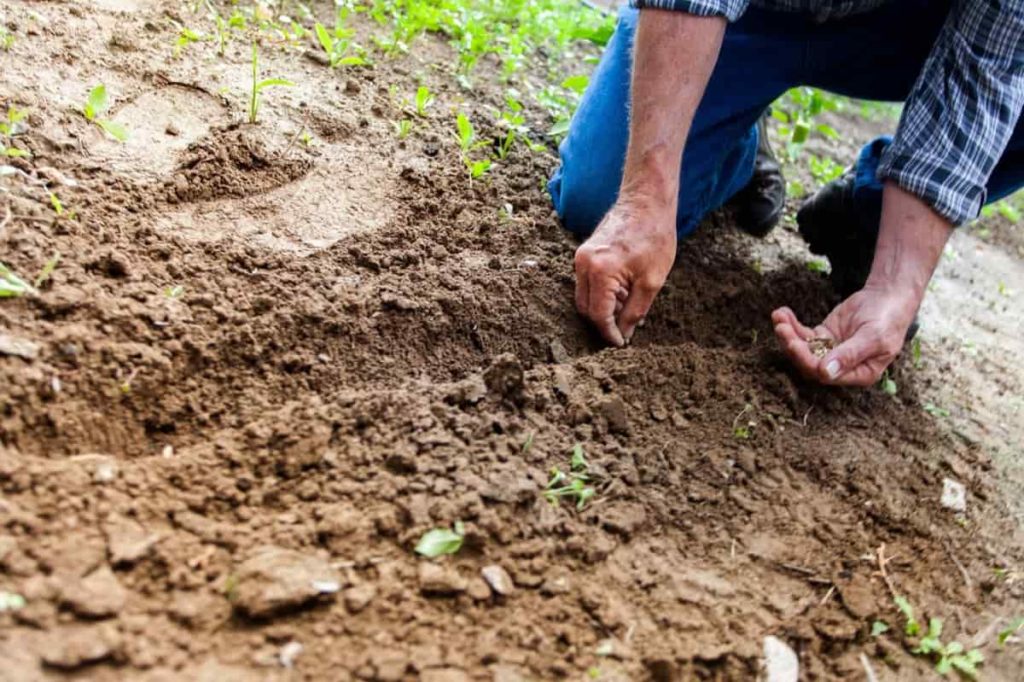
Some other plants that make great companions for Beans include Carrots, Cabbage, Brussel Sprout, Celery, Kale, Strawberry, Swiss Chard, Peas, Cauliflower, and Parsley, Spinach, and Savory. Beets make a great companion for Beans, but stunting the growth of Pole Beans prevents the growth of Beetroot. Other members of the allium family, like Onions and Garlic, prevent the growth of Beans and do not allow them to add nitrogen to the soil.
These don’t make a great pair with Beans, including Fennel and Kohlrabi. Nitrogen promotes the growth of leaves, so crops with leaves like Lettuce and Cabbage should be planted on the same bed as Beans. On the other hand, crops such as Tomatoes and Cucumbers should not be planted after Beans, as nitrogen in the soil will produce leafy plants with fewer fruits.
- Flower Garden Designs and Layouts for Beginners
- Planting and Spacing Techniques in Papaya: A Beginner’s Guide
- Growing Gold: Essential Techniques for Planting Pineapples
- How to Make Kalanchoe Plant Bushy: Home Remedies and Solutions
- 11 Reasons Why Your Gardenia is Not Blooming: Home Remedies and Solutions
- Eco Elegance: The Guide to Designing a Drought-Tolerant Landscape
- Gardening on a Slope: Strategies for Hillside Landscaping
- Nourish and Flourish: Top Organic Mulches for Thriving House Plants
- Everything You Want to Know about Indian Mogra Flower: Discover Uses and Growing
- Green Thumb Success: Expert Tips for Cultivating Greenhouse Pumpkins All Year Round
- Maximize Growth & Flavor: The Ultimate Guide to Companion Planting in Herb Gardens
- How to Control Rhododendron Problems Naturally: Home Remedies and Organic Ways to Fix Them
- Natural Magic: The Remarkable Benefits of Cinnamon for Plants
- Best Steps to Revive Dying Tulip with Natural and Organic Treatment
- 10 Reasons Why Your Angel Trumpet is Not Blooming: Remedies and Treatment
- How to Fix Periwinkle Leaf and Flower-Related Problems: Natural Remedies and Solutions
- How to Fix Zinnias Leaf and Flower Problems: Discover Natural and Home Remedies
- Organic Steps to Induce Lemon Tree Flowers: A Comprehensive Guide
- Bloom Booster: Crafting the Perfect Homemade Bougainvillea Fertilizer
- Optimizing Growth: A Guide to Applying NPK Fertilizer for Potted Plants
- 10 Best Homemade Fertilizers for Rubber Plant: DIY Recipes and Application Method
- How to Boost Female Pumpkin Flowers: Effective Steps for More Flowers and High Yields
- Transform Your Indoor Garden: Top Benefits of Pink Salt for Houseplants
- 10 Best Homemade Fertilizers for Peacock Plants (Calathea): Easy DIY Guide
- Unlock Blooms: 9 Reasons Why Your Potted Chrysanthemum is Not Blooming
- 8 Reasons Why Your Potted Hibiscus is Not Blooming: Fix it with Simple Solutions
- Unlock Blooms: 9 Key Reasons Your Potted Frangipani Won’t Flower
- 10 Reasons Why Is My Ice Plant Not Blooming: Remedies and Treatment
- 10 Reasons Why My Potted Hydrangea Not Blooming: Treatment and Remedies
- 10 Reasons Why is My Wisteria Not Blooming: Remedies and Treatment
- 10 Reasons Why is My Goldfish Plant Not Blooming: Remedies and Treatment
- Maximize Your Space: Ultimate Guide to Balcony Gardening with Grow Bags
- 10 Reasons Why Your Iris is Not Blooming: Remedies and Treatment
- 10 Reasons Why Your Anthurium Plant is Not Blooming: Treatment and Remedies
- 10 Reasons Why Your Aquaponic Plants Are Not Flowering: Remedies and Treatment
- 10 Reasons Why Your Agapanthus is Not Flowering: Remedies and Treatment
